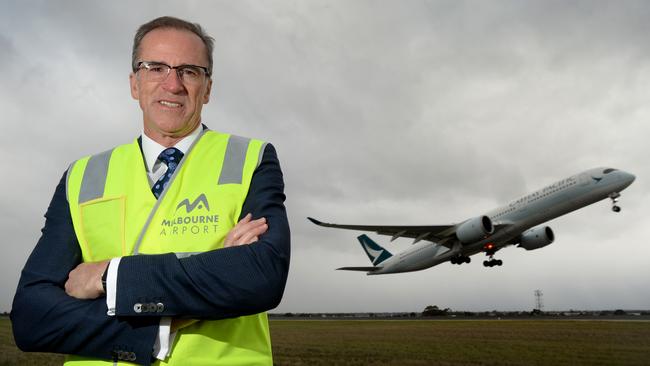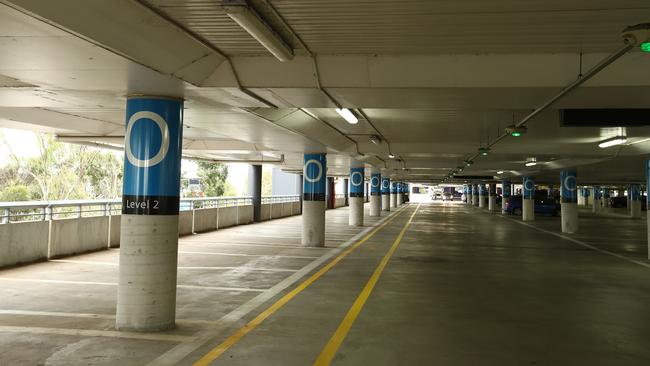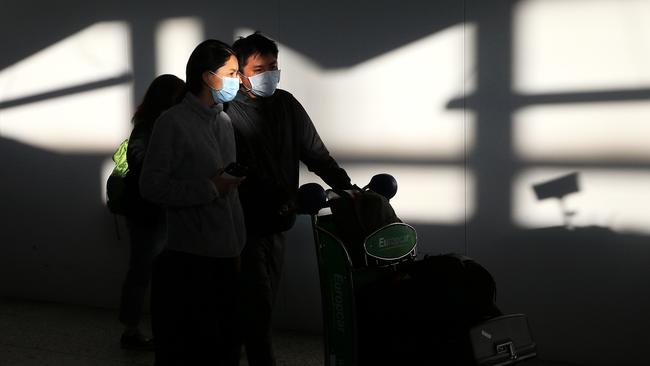Free parking a giveaway for Melbourne Airport
Melbourne Airport scrapping parking charges shows just how quickly COVID-19 is smashing normal business practice.

When Melbourne Airport throws open its golden boom gates, you really know it’s not business as usual.
The decision to give away free parking at Tullamarine – which last year reaped $400,000 a day, and $145.5 million annually from parking fees – shows just how quickly COVID-19 is changing standard operating procedures for businesses.
In one sense, the temporary scrapping of parking fees was an easy decision for Melbourne Airports Corporation boss Lyell Strambi, as the multistorey facility is pretty much deserted now.
But Mr Strambi says it’s about the airport supporting essential workers who still need to fly.
“From next week, the only people who will be flying will be doing essential activities,” Mr Strambi told The Weekend Australian.
“They’re flying for a really good reason, whether it be research or medical professionals, or one of the other essential industries, that have to keep working.
“So we’re going to open up the booms and make the parking free because you know it’s right and a sensible contribution to try to do our part overall.”

Melbourne Airport is owned and operated by Australia Pacific Airports Corporation, a consortium of superannuation and pension funds, including the federal government’s Future Fund, IFM Investors and the NSW government’s SAS Trustee Corporation.
Mr Strambi, the former head of Qantas’s domestic business, said the airport has been working quickly to cope while business dries up, as airlines scrap most international and domestic flights.
“Last week feels like it was so long ago, so much has happened,” he said.
“It’s (passenger numbers) been dropping enormously every day and yet though in the last week we still had a lot of activity as people try and get themselves back home.”
Despite decades in the aviation sector, Mr Strambi says he’s learning on the run about the business in a COVID-19 world, which will limit air travel to essential flights.
“I struggle to put a number on the number of flights,” he said.
“We’ve never really been in this world before.”
Mr Strambi added: “We know what business flying is. We know what leisure flying is.
“We know segmentation, but there’s never been a segment called essential travel.”
Mr Strambi said Melbourne Airport was planning for as few as two flights a day on major domestic routes, such as the Melbourne-Sydney leg.
Mr Strambi said Melbourne Airport was working closely with Qantas and Virgin and other airlines to offer them help on rent and other fees.
“We are making relief offers to the airlines to actually ease some of that burden for a period of time to give them a breathing space,” he said.
“We need the airlines to come back and grow again. We are really doing our part to help these guys through because at the end of the day we need them to come back to grow again.”
Mr Strambi said the airport had experienced a “huge short-term impact on cash” but it was well set up to ride out the crisis, and to help the airlines and retailers bounce back.
About 20,000 people earn their living from the airport in some capacity.
“We are a huge employment hub and an essential service,” he said.
“We need to keep it running and we need to keep it safe and we look forward to making sure we’re ready to bounce back when the nation’s ready to bounce back. It’s crucial.
“We are trying to do our part so we don’t have to run to anyone for assistance, but you know if this drags on forever then of course everybody is in the same boat.”
Mr Strambi said by Wednesday this week, passenger and flight numbers had plunged to just 40 per cent of usual domestic volume and 30 per cent of international volume.
“That is a massive difference and the place looks empty but there’s still a number of people coming through. We’re 100,000 passengers a day normally and two days ago we were probably still doing 35,000 passengers,” he said.
“Traffic is falling by the minute, as nations start to effectively close their borders; I think we’re heading to a world where foreign airlines are only coming in to take their nationals home, and we’ll be doing rescue flying out to pick Australians up.”

Mr Strambi said the airport had been on the front lines dealing with the virus for more than a month, as it initially started dealing with passengers coming in from China.
“There have been a number of cases where passengers have shown symptoms and they’ve not been put through the terminals but have been taken straight off the plane and into an ambulance and off the premises,” he said.
“Even in the early days of the Chinese flights we sectioned off one end of the airport, those flights came into that end, and they were met with people in complete protective kit.
“If anyone showed signs of a symptom, it was straight into an ambulance, no messing around.”




To join the conversation, please log in. Don't have an account? Register
Join the conversation, you are commenting as Logout